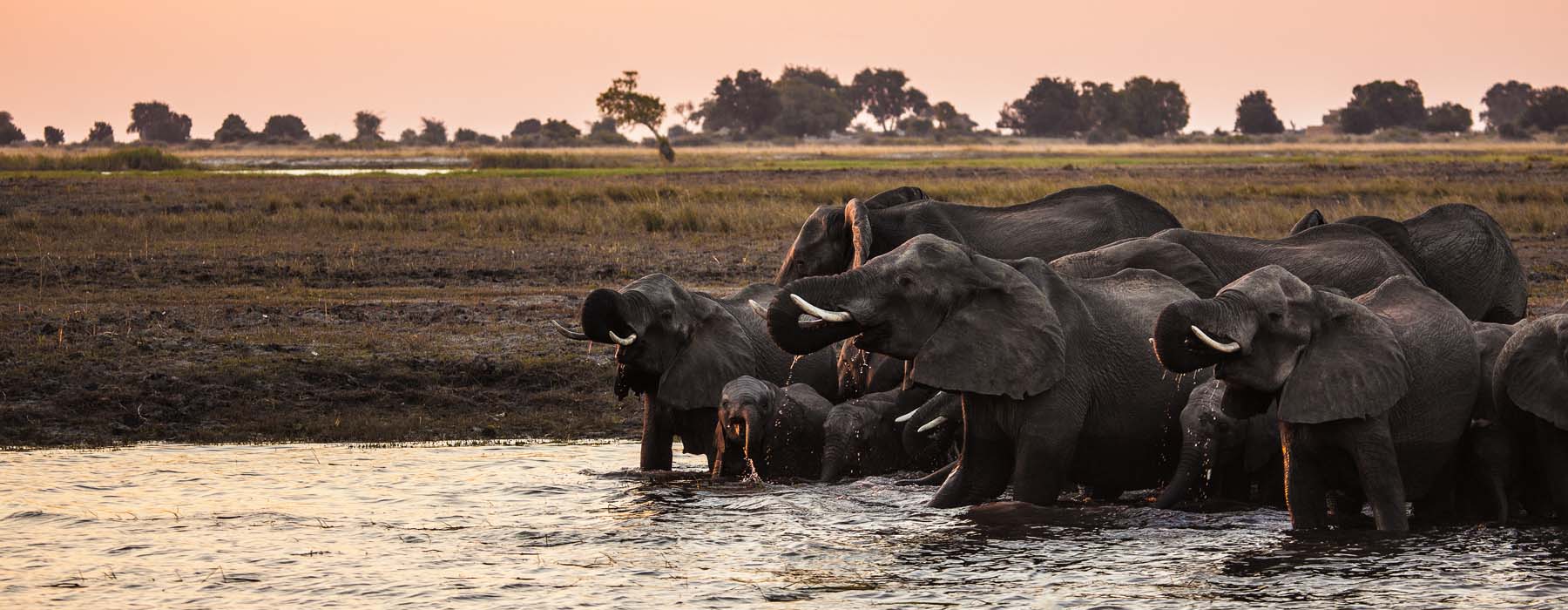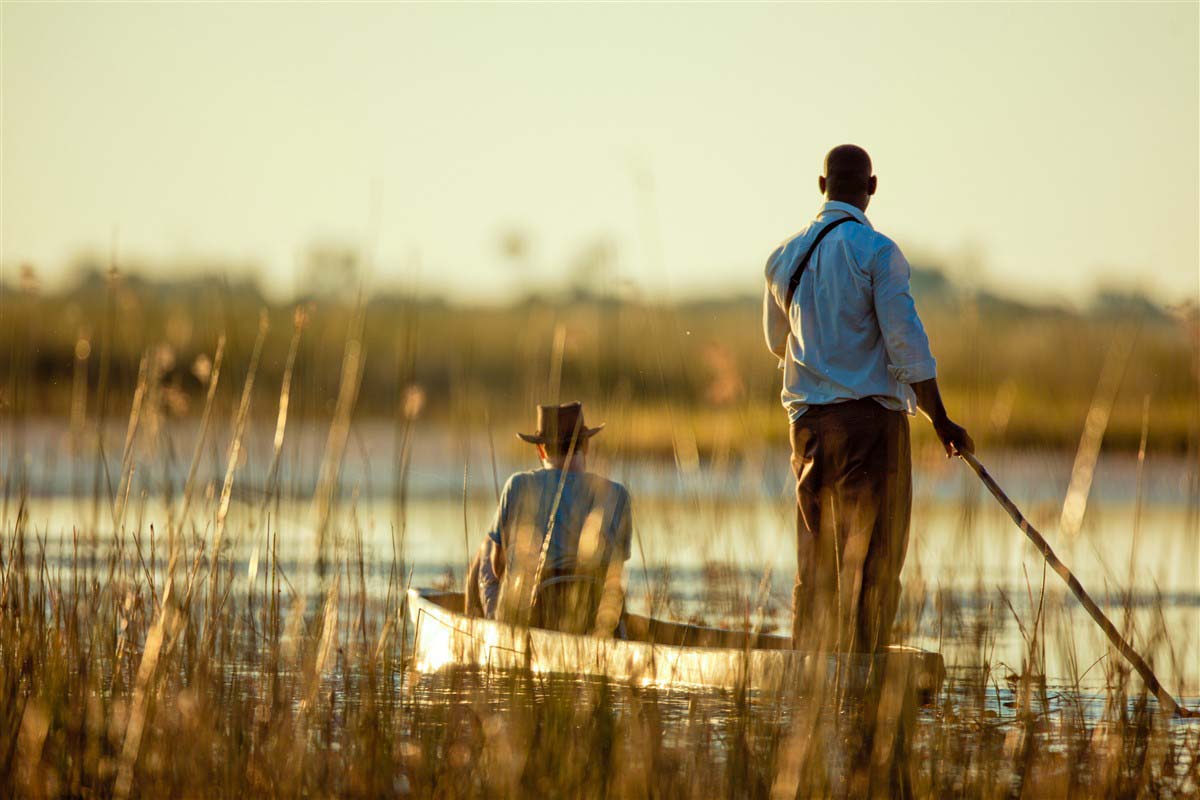January
February
March
April
May
June
July
August
September
October
November
December
Botswana is a Central African country bordered by Namibia, South Africa, Zambia and Zimbabwe. Botswana is land locked with no access to the sea or ocean. Located on the Tropic of Capricorn, Botswana enjoys a temperate but varied climate and has two main seasons. In winter, the days are warm and sunny and the nights are very cool. Between November and March, it is the summer but also the rainy season, with heavy showers and thunderstorms. It is very hot and the air is quite heavy and sweltering. However, in the desert, which covers a large part of the country, the climate is very specific and more arid in some regions. Between these two seasons, the weather is rather dry. Winter is therefore the best time to visit Botswana. There are less rains and temperatures are very pleasant, with plenty of sunshine. June, July and September are the best times to explore Botswana.
Weather in Botswana
Botswana is a fairly flat country with a large rolling plateau. The Kalahari Desert covers more than 84% of the territory. Far from oceanic influences, the climate is mostly temperate. Generally speaking, rainfall throughout the country varies between 10 and 20 inches. The north is wetter with just over 20 inches annually.
During the summer which is also the rainy season, temperatures can rise to 40°C, especially in January, which is the warmest month. The average for this season is relatively high, at about 26°C. The air is heavy and humid, with about 80% humidity. It is important to note that, during the rainy season, showers are more frequent in the morning. In the afternoon, the humidity level drops to 30% or 40%. As a result of these numerous showers, the roads can be blocked for several days. January is considered the wettest month. However, it's not uncommon to see very good days during this period. Indeed, the climate is changeable. The weather can be very pleasant for a few days, and, without warning, it can rain the next day for several hours. If you want to come to Botswana to discover its flora, this is the perfect time. Humidity makes the landscape lush and it is also the birth period for herbivores! Just be sure to pack rainwear, in case you're caught in a surprise downpour.
In winter, from May to September, the weather is milder. It's the dry season. Daytime temperatures average 19°C. However, the nights are cool with broad variations in temperature. Some nights can see temperatures fall as low as zero or even turn negative. August is sometimes windy from the west, mixing sand and desert dust. This makes visibility more difficult. Due to the heat and very low humidity, winter in Botswana can also be associated with a semi-arid climate. Depending on the region, the dry season can last between six and nine months and rainfall is almost non-existent between May and September. Throughout the dry season, it should be noted that June and August are the coolest months with an average of 13°C. Mornings and evenings are very cool. Starting in September, temperatures increase and herald the arrival of the rainy season. Indeed, October is the hottest month of the year in Botswana. With sunnier and milder days than the rest of the year, it's the best time to see the country.
Gaborone
Gaborone is the capital of Botswana, located to the south of the country. It has a steppe climate. It rains throughout the year, but not much, which explains why the climate is considered to be steppe, semi-arid. The average temperature is 20°C. The hottest month is January, averaging about 25°C. Conversely, July is the coolest, at only 12°C. Approximately 18 inches of rain per year. November to February are the wettest months (although the variations are not that striking). Between June and August, it hardly rains (less than 0.12 inches of water).
The Kalahari Desert
The Kalahari Desert occupies a vast part of Botswana. This is one of the driest regions in the world but still has a rainy season. Be careful, it's shorter than in the rest of the country. The dry season lasts about eight months, and the wet season varies between only one and four months. Despite the term 'desert', this region is rich in vegetation. The southwest part is the driest (less than 5 inches of annual rainfall). In the north and east, there are large forests and savannahs, with rainfall of more than 20 inches. In the coldest months, in winter, the climate is semi-arid. Swept by the tropical Sahelian climate (climate crossing West Africa from west to east), winter temperatures are not tropical and remain cool. The Kalahari Desert has cooler temperatures than other deserts, such as the Sahel or Sahara, due to its altitude of between 2,000ft and 5,000ft. Between June and August, nights can often be frosty. It is also thanks to its altitude that the Kalahari Desert has warm but bearable summer months. Temperatures rarely exceed 29°C. The best time to discover the desert is just after the rainy season. Roads are usable again and temperatures are pleasant.



